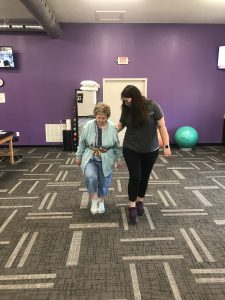How Physical Therapy Can Help People with Osteoporosis Live Stronger, Safer Lives
October 21, 2025
Osteoporosis is often called the “silent disease” because it progresses without symptoms until a fracture occurs. It affects millions of people—especially postmenopausal women and older adults—by weakening bones and increasing the risk of fractures. While medication and nutrition play key roles in managing osteoporosis, one of the most powerful tools in preventing bone loss and fractures is often overlooked: physical therapy.
Physical therapy isn’t just about rehabilitation after injury. For people with osteoporosis, it’s a proactive, personalized approach to strengthen muscles, improve balance, enhance mobility, and ultimately reduce the risk of falls and fractures. Here’s how physical therapy can make a real difference.
Building Strength to Support Bone Health
One of the most important goals in osteoporosis management is to maintain or improve bone density. Physical therapists design strength-training programs tailored to each person’s condition and fitness level. These programs may include:
-
Weight-bearing exercises like walking, dancing, or stair climbing
-
Resistance training using light weights or resistance bands
-
Postural strengthening to improve spinal alignment and reduce the risk of vertebral fractures
Over time, these exercises help stimulate bone growth and increase muscle mass, which plays a critical role in supporting the skeletal system.
Improving Balance to Prevent Falls
Falls are the leading cause of fractures in people with osteoporosis. Physical therapists are trained to assess balance, gait, and coordination—and to address any deficits through targeted exercises.
Common balance exercises include:
-
Standing on one foot
-
Heel-to-toe walking
-
Tai chi-inspired movements
-
Use of balance tools like foam pads or wobble boards (under supervision)
Better balance means fewer falls—and fewer fractures.
Enhancing Flexibility and Posture
Osteoporosis often leads to poor posture, especially a forward-stooped position (kyphosis), which can increase the risk of spine fractures. Physical therapists help patients:
-
Stretch tight muscles
-
Strengthen postural muscles (like the back extensors)
-
Learn proper body mechanics for everyday activities
This not only relieves pain and improves appearance—it helps protect the spine from unnecessary strain.
Pain Management and Recovery from Fractures
Physical therapy can also help manage chronic pain caused by osteoporosis or related fractures. A physical therapist might use:
-
Gentle therapeutic exercises
-
Manual therapy
-
Modalities like heat, cold, or electrical stimulation
-
Breathing and relaxation techniques
If a fracture has already occurred, a physical therapist can guide safe recovery and rehabilitation, helping patients regain strength and confidence.
Education and Lifestyle Guidance
Physical therapists educate patients on how to live safely and actively with osteoporosis. This includes:
-
Safe ways to bend, lift, and carry objects
-
Modifications to the home to prevent falls (like removing tripping hazards or improving lighting)
-
Guidance on footwear and assistive devices if needed
Empowering patients with knowledge helps them stay independent and injury-free.
Osteoporosis doesn’t have to mean a loss of independence or quality of life. With a tailored physical therapy program, individuals can strengthen their bodies, improve their balance, and reduce the risk of injury. Whether you’re newly diagnosed or living with the condition for years, partnering with a physical therapist can be a game-changer in managing osteoporosis safely and effectively.
If you or a loved one has osteoporosis, consider consulting a physical therapist to build a program that supports your long-term health and mobility. Strong bones begin with strong movement.

